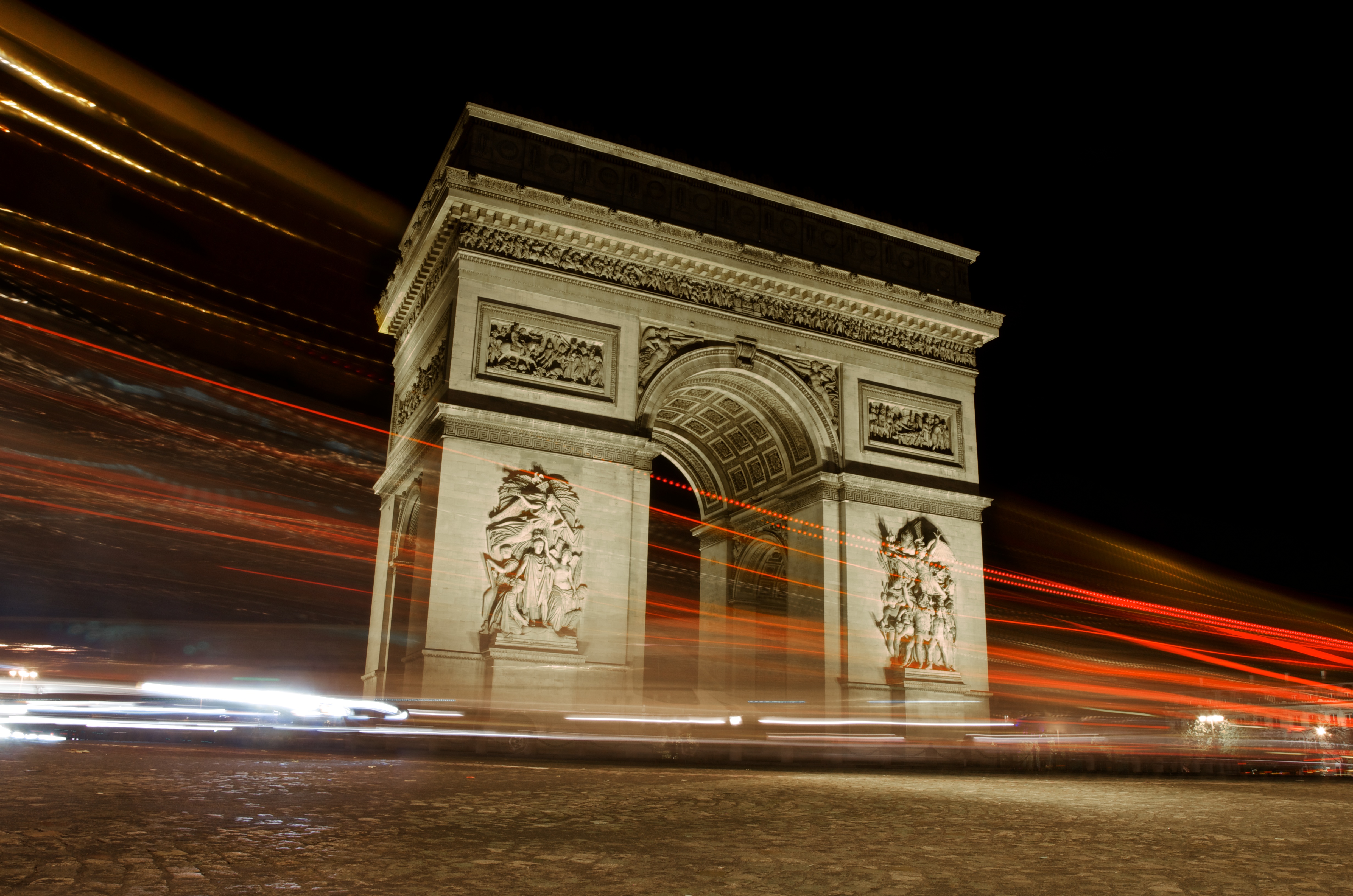 |
| 18-55mm @ 18mm f22 15s ISO 100 |
This is the article I wish I'd read before traveling to France and taking pictures like the one on the right. In the full resolution image here, fuzziness caused by diffraction is clearly noticeable.
Depth of field and Diffraction
Changing the aperture of a camera is the best way to change the depth of field. Larger apertures produce images with smooth, dreamy qualities that have a very depth of field, while smaller apertures produce images with a much larger depth of field. This may lead some photographers to think that the smaller the aperture is, the sharper the image will be, but that is not true.When light rays travel through a small hole they bend and interfere with each other, an effect known as diffraction. Unfortunately, this creates a difficult tradeoff for photographers, because stopping down the lens to increase depth of field also increases diffraction. The result is a photo that has a large depth of field but is quite fuzzy.
This issue gets bigger at larger formats, because increasing the size of the sensor (or film) decreases the depth of field. This is why medium format cameras have aperture settings far smaller then f22 (the most common minimum aperture on modern lenses built for digital APS-C and FX sensors). lenses for medium format often have minimum apertures of f45.
The Practical Test
I set up a still life and shot it with three different cameras to demonstrate the effects of diffraction and pixel size. The D50 has 6.1 MP sensor, the D7000 has a 16.2 MP sensor, and the D7100 has a 24.1 MP sensor. The reason I chose to demonstrate with three cameras at three different resolutions but the same sensor size (Nikon DX, also known as APS-C), is because the pixel size on the sensor matters. A camera with larger physical pixels is less effected by diffraction than a camera with smaller pixels packed more tightly together because the ratio between the pixel size and the diffraction pattern (called an airy disk) size is smaller. This Cambridge in Color page goes into more detail. The best way to demonstrate this would be by comparing two cameras with different sensor sizes but the same resolution, like the Nikon D7100 and Nikon D600, but I don't have a D600 available.Cameras:
 |
| 50mm f1.4 @ f8 1/60 ISO 100 |
 |
| 50mm f1.4 @ f8 1/60 ISO 100 |
.jpg) |
| 50mm f1.4 @ f8 1/60 ISO 100 |
Test shot:
I set up this still life with an old book because it has a very high level of detail—the D7000 at f8 can see individual printing dots—and can be parallel to the focal plane to try and remove some of the effects of the depth of field changes. All test shots were shot on a tripod with a tether or remote shutter and are unprocessed raw images straight from the camera that have been aligned and white balanced. All test images were shot through the same 50mm f1.8 lens at ISO 100, except for the D50 which only goes down to ISO 200. |
| D7100 50mm f1.8 @ f8 2.5s ISO 100 |
Starting with the D7100, here are 100% crops
 | |
| D7100 f4 0.6s ISO 100 |
 |
| D7100 f8 2.5s ISO 100 |
 |
| D7100 f22 20s ISO 100 |
 |
| D50 f4 0.6s ISO 200 |
As with the D7000, there is little to no visible difference between f4 and f8 in the D50.
 |
| D50 f8 2.5s ISO 200 |
 |
| D50 f22 20s ISO 200 |
Real world implications
Diffraction in APS-C and FX cameras is not as much of a restraint as it is in larger format cameras, but not understanding the concept will severely limit modern DSLRs that have very small pixels. You have to understand all the details or you won't get the most out of your camera.Here's a stark example of that: Two images, taken with two different cameras through the same lens with the same settings on everything but aperture. The D50 is worth about $150, and the D7100 is worth about $1,100, but the D50 is set at f8 and the D7100 is set at f22. These images are raw from the camera, then I corrected the alignment, exposure (a tiny bit, they were pretty accurate already), and white balance.
The camera on the left is the Nikon D50, the camera at the right is the D7100. This is a visual example of what many of the best photographers often repeat: the photographer matters more than the camera. If both were shot perfectly, the D7100 would win hands down, but if you don't understand the subtleties of photography you'll never improve just by buying new equipment.
Full resolution test photos
Nikon D7100 f4Nikon D7100 f8
Nikon D7100 f22
Nikon D7000 f4
Nikon D7000 f8
Nikon D7000 f22
Nikon D50 f4
Nikon D50 f8
Nikon D50 f22

No comments:
Post a Comment